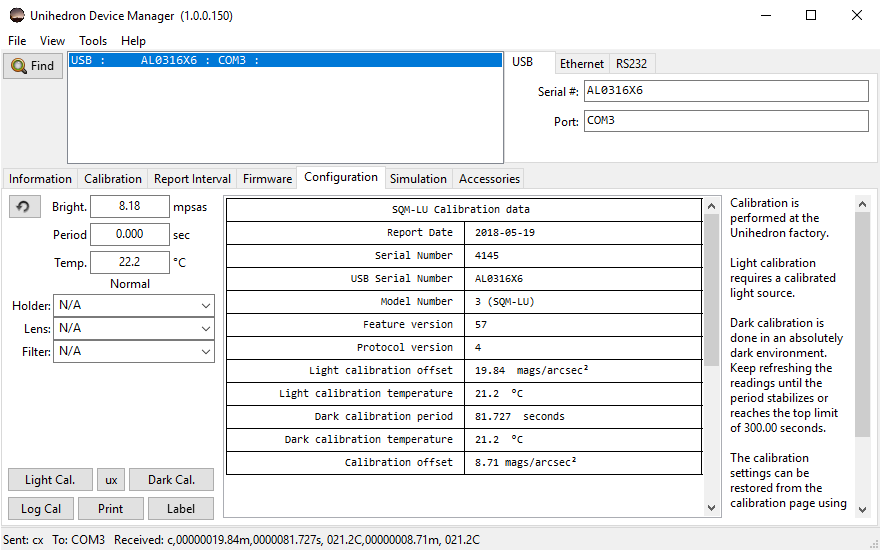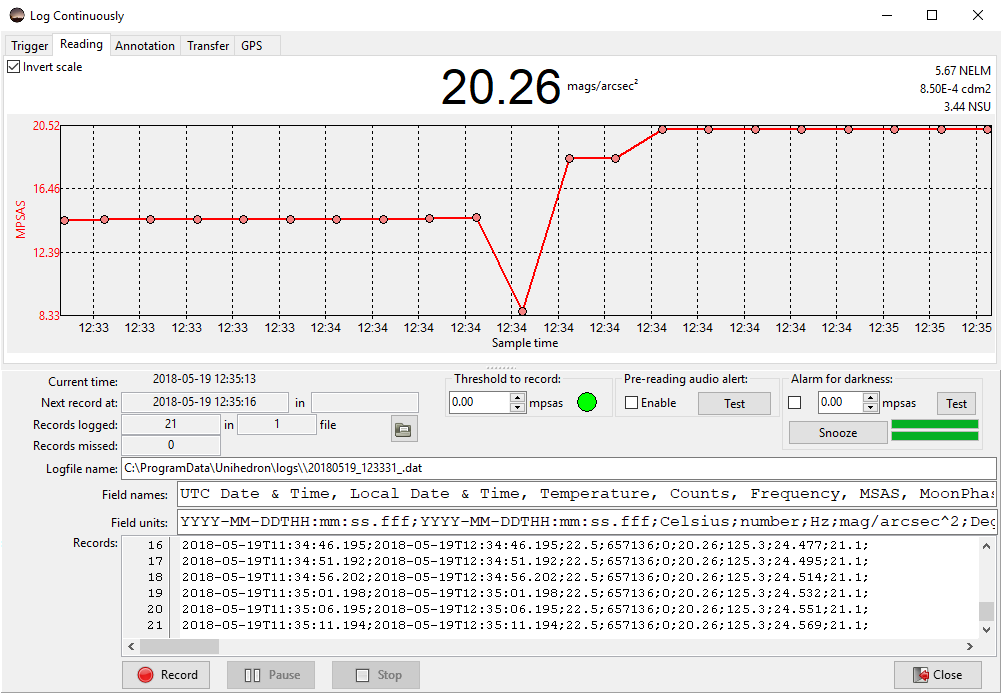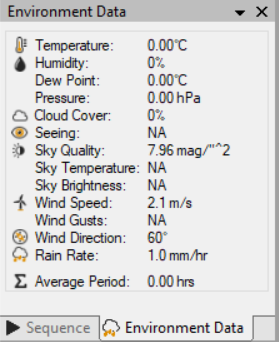So I recently received from First Light Optics (FLO) the Unihedron Sky Quality Meter (SQM-LU) USB device. The box contained the SQM-LU device, a 2 metre USB cable, CD containing all the necessary software, a hard copy of the user manual and a calibration report.
 The device was already factory calibrated and was shipped with latest firmware. The Unihedron Device Manager (UDM) is the standard way to access the device and provides all the necessary options for a simple plug and play experience.
The device was already factory calibrated and was shipped with latest firmware. The Unihedron Device Manager (UDM) is the standard way to access the device and provides all the necessary options for a simple plug and play experience.

The device can also be connected to a GPS device via the configuration tab to get the location and time so it can be written to the data headers. Measurements can be written on a configurable interval and the file can even be transferred to a remote machine via FTP or SCP (not tested yet). There is even a simulation mode for when you want to just test the device during the daytime.

The log file structure and protocol is well documented shown above but summarised below
# UTC Date & Time, Local Date & Time, Temperature, Counts, Frequency, MSAS, MoonPhaseDeg, MoonElevDeg, MoonIllum # YYYY-MM-DDTHH:mm:ss.fff;YYYY-MM-DDTHH:mm:ss.fff;Celsius;number;Hz;mag/arcsec^2;Degrees;Degrees;Percent
There are included examples on the CD showing how to connect the device directly using various languages such as Python and via a RaspberryPi. There is also a freeware program SQM Reader3 with basic functionality that can be used instead of UDM, they also produce a more fully functional program (SQM Reader Pro) at a cost.

There is a third party ASCOM driver that allows integration with imaging automation software such as SGPro via the ASCOM Observing Conditions Hub

and this value is written directly to the FITs header (SKYQLTY field) of your acquired image.
This device will of course will be joining us on the trip to Tenerife so the measurements can be provided to all and sundry.
